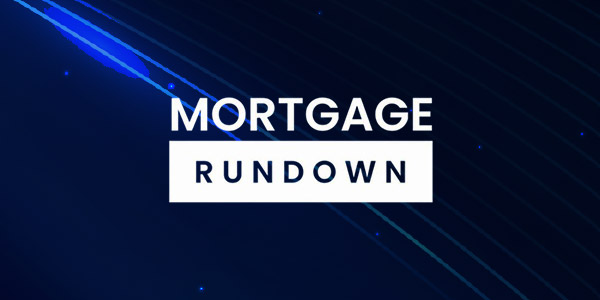Housing News, Videos
Short-Term Rates vs. Long-Term Rates
March 25, 2021
Alexis: Hey, everybody. Welcome back to the Mortgage Rundown. I'm Alexis Quinney, here with Jason Obradovich, CIO of New American Funding. How have you been, Jason?
Jason: You know, doing pretty well. Things have been busy but great. How about yourself?
Alexis: Pretty good. Pretty good. So, a few questions for you. The Federal Reserve met last week and made a lot of announcements, so I wanted to get some clarity from you. Will mortgage rates increase in 2021?
Jason: Boy, you just start with the toughest question. The Federal Reserve did meet last week. They talked about rates. Obviously, all of us and the mortgage banking universe have seen mortgage rates have gone up a lot over the last couple of months. But the Fed said, ‘Look, we're still on hold. We're not planning on raising rates for a couple of years. A few of them came out and said, "Well, maybe the end of 2023 as opposed to definitely not in 2023." And so, I think the market had a little bit of reaction to that. The market did have some reaction to the fact that the Fed said, ‘Look, inflation is higher in the short term, but we don't expect it to keep climbing.' So, this whole idea of why rates are going up right now because of this anticipation of higher inflation is not going to happen. They said, ‘Look, the long-term trend for the last 25 years has been inflation has not been an issue. That's the problem of the 80s and 70s, not in the 2020s.'
Alexis: Yeah, makes sense. OK, so what about the next few years, what can we expect to see there?
Jason: That's where it gets a little bit tougher. Right? Because the feds saying, 'Look, we're not raising rates this year. Mortgage rates have gone up. We're not going to raise it for a couple of years. We'll keep watching the economy. There are some structural issues where the economy is not going to fully recover for quite a while from the damage of the pandemic. Certainly, in certain industries, it's done really well for the pandemic and other areas structurally. And it takes a long time for some of those other structural things to work themselves out. So, the Fed's saying, ‘Look, we're not raising rates. Nobody needs to panic. We're going to be here to support the economy and we'll just play it by ear. But don't expect anything for a few years.'
Alexis: OK, and I don't mean to backtrack here, I guess it's just a little confusing because rates are currently going up, but it sounds like you're saying they're not going to go up. So, what does that really mean?
Jason: Yes. So there always is some confusion. Right? People hear ‘Hey, the Fed's raising rates. The Fed's not raising rates? Rates are going up.' It's like now when the Fed is talking about raising rates, they're talking about short-term rates, that overnight rate, the one-day rate. When we talk about mortgage rates, we're talking about 10-, 20- or 30-year rates that are very, very different things. And so, what happened, starting in the middle of January is people started worrying about inflation. Do you want to own a 10-year Treasury bond for 10 years that yields less than 1% when inflation might be 2.5, 3%? You're actually losing money by holding a bond that earns less interest than inflation. And so, the Fed's saying, ‘Look, we're not going to touch short-term rates.' The long-term rates that they don't control, you know, a lot of that's the market dynamics. Right? A lot of the traders, hedge funds, people that own treasuries, people that are now shorting Treasuries because they don't want to own some of these. That is what's really impacting mortgage rates. And so, I'm going to put a graph on your screen where you can actually see the difference between short-term rates and long-term rates. And generally, there's always a spread between them. And you might be one hundred basis points, which is 1%. But if you look recently, the gap between short-term rates and long-term rates is as high as it's ever been in, I think, three or four years. So, this inflation expectation is that gap. So that's why when I say the Fed hasn't touched rates, they're near zero, but mortgage rates are going up, it's because of that gap.
Alexis: Got it. All right. It's a little confusing, but it makes sense. You just got to know when you explain it in terms like that.
Jason: So, yeah, it's hard to explain. I think just to someone who's not familiar with the market, what a yield curve is. And the yield curve, when if you hear that term, it's ‘Hey, look, there are short-term rates, there are medium-term rates and there are long-term rates, and they all move interdependently of each other.' So, the Fed only touches that overnight rate, but that really does have a downstream impact on some of the longer-term rates. The Fed, when they decided to buy mortgage-backed securities, was buying long-term rates, or trying to buy those rates to get them to go lower. And you might see, you know, we don't know, we might see in the next year. The Fed says, ‘Look, to help the economy, we don't want mortgage rates this high. We need to lower long-term rates because that's really what's affecting the economy.' Yeah, the short-term rates are low, but a lot of us who have money in our savings account doesn't like earning 0% interest on those deposits. So, the Fed has to try to balance both. And so, I think that's where they use some of these other tools other than just changing the short-term rate is buying long-term treasuries and buying mortgage-backed securities, help those long-term rates lower.
Alexis: All right. Got it. OK, those are my questions for today. I'm excited for our next episode to see where these rates really end up. But that's all I have for you today.
Jason: OK, great. Yeah, we will just have to see over the next month or so as the economy starts to open up, as the pandemic starts to get a little bit farther behind us, hopefully, to see really what's happening between short- and long-term rates. Maybe we'll see a little bit of a dip, maybe things will stay where they're at. Just a point of identification is that rates today, the 10-year Treasury, is exactly where it was right before the pandemic started. So, we kind of went down and kind of back up. And so, let's just see where we go from here.
Alexis: All right. Well, sounds good. I will talk to you in a few weeks.
Jason: OK, have a great day.
Alexis: You too. Thank you.






 Smart Moves Start Here.
Smart Moves Start Here.